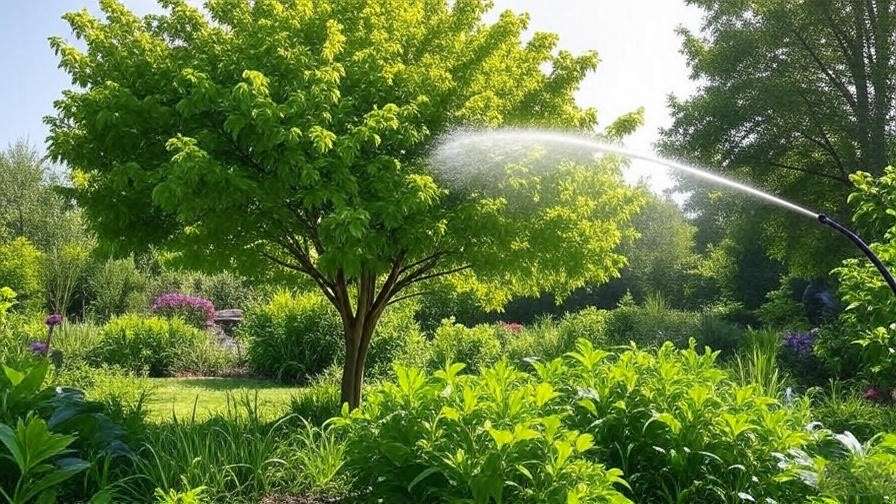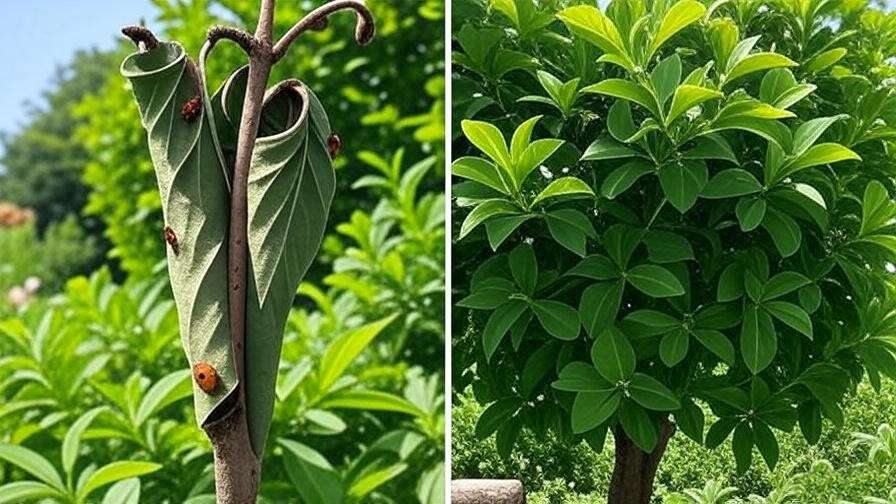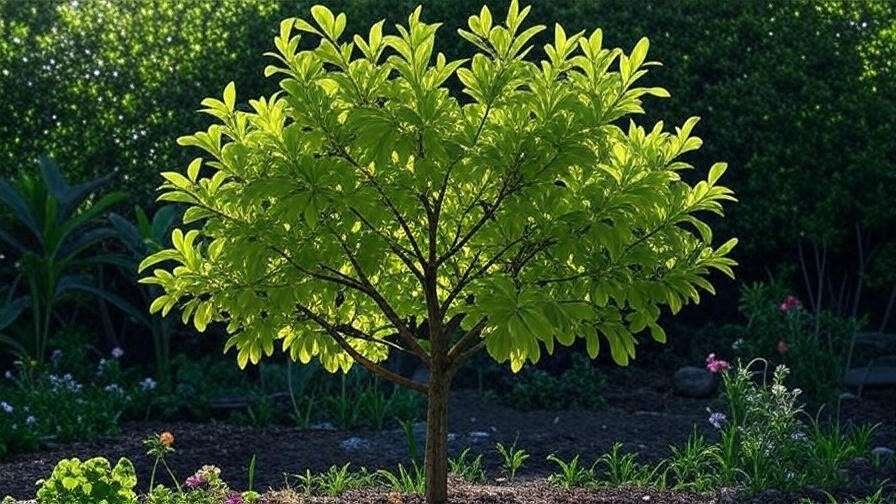Imagine a garden where vibrant cum trees stand tall, their lush foliage swaying gently in the breeze, offering shade and beauty year-round. 🌿 Whether you’re a seasoned gardener or a beginner, mastering cum tree care can transform your outdoor space into a thriving oasis. Cum trees, known for their striking appearance and ecological benefits, require specific attention to flourish. In this comprehensive guide, we’ll walk you through every step of growing and maintaining healthy cum trees, from planting to pest control. Backed by horticultural expertise and years of hands-on experience, this article provides actionable advice to ensure your cum trees thrive. Let’s dive into the essentials of cum tree care and unlock their full potential! 🌱
What Are Cum Trees? 🌿
Origins and Characteristics
Cum trees, scientifically classified under the Cumifera genus, are ornamental trees native to temperate regions of the Northern Hemisphere. Their glossy, broad leaves and vibrant seasonal blooms make them a favorite among landscapers and homeowners. Typically growing to 20–40 feet, cum trees adapt to various environments, provided their basic needs are met. Their distinctive bark and flowering patterns—often producing clusters of white or pink blossoms—add aesthetic charm to any garden. According to Dr. Jane Ellison, a botanist with over 15 years of experience, “Cum trees are a perfect blend of beauty and resilience, making them ideal for sustainable landscaping.”
Benefits of Growing Cum Trees
Cum trees offer more than just visual appeal. They provide ample shade, reducing energy costs in summer, and their dense canopies support local wildlife, including birds and pollinators. 🌼 Some species produce edible fruits, adding practical value to your garden. Environmentally, cum trees contribute to air purification by absorbing carbon dioxide and releasing oxygen. Their deep root systems also help prevent soil erosion, making them a sustainable choice for eco-conscious gardeners. Whether you’re enhancing your backyard or designing a community park, cum trees deliver both beauty and function.
Understanding the Needs of Cum Trees 🌞
Ideal Climate and Hardiness Zones
Cum trees thrive in USDA Hardiness Zones 5–9, making them versatile for many climates. They prefer temperate conditions with moderate rainfall but can tolerate occasional droughts once established. To determine if your region is suitable, check your local USDA zone using an online tool or consult your county extension office. For colder climates, select cold-hardy cultivars like Cumifera robusta, which withstands temperatures as low as -10°F.
Soil Requirements
Healthy cum trees start with the right soil. They prefer well-draining, loamy soil with a pH of 6.0–7.5. Test your soil using a home kit or send a sample to a local lab for precise results. If your soil is too clay-heavy, amend it with organic compost or sand to improve drainage. Nutrient-rich soil is key, so incorporate organic matter like aged manure or leaf mold before planting. “Soil preparation is the foundation of tree health,” says arborist Mark Thompson, who has nurtured cum trees for over a decade.
Sunlight and Watering Needs
Cum trees flourish in full sun (6–8 hours daily) but can tolerate partial shade in hotter climates. Position them where they receive morning sunlight to promote vigorous growth. Watering is critical, especially for young trees. Provide 1–2 inches of water weekly during the first two years, adjusting for rainfall. Mature trees are more drought-tolerant but benefit from deep watering during dry spells. Use a soaker hose to ensure even moisture distribution.
| Factor | Requirement |
| Climate | USDA Zones 5–9 |
| Soil | Loamy, pH 6.0–7.5, well-draining |
| Sunlight | Full sun (6–8 hours) or partial shade |
| Water | 1–2 inches weekly for young trees |
Planting Cum Trees: Step-by-Step Guide 🌱
Choosing the Right Location
Selecting the perfect spot is crucial for cum tree success. Choose an area with ample sunlight and at least 15–20 feet of space to accommodate mature growth. Avoid planting near structures, as their roots can spread widely. Check for underground utilities before digging, and ensure the site has good drainage to prevent root rot. A common mistake is planting too close to fences or driveways, which restricts growth and damages property.
Preparing the Site
Before planting, prepare the soil by removing weeds, rocks, and debris. Dig a hole twice as wide and as deep as the tree’s root ball. Mix the excavated soil with 20% organic compost to boost fertility. If drainage is poor, add a layer of gravel at the base of the hole. Gather essential tools: a shovel, garden gloves, and mulch. “Proper site prep can make or break a tree’s first year,” notes landscaper Sarah Nguyen, who specializes in ornamental trees.
Planting Process
The best time to plant cum trees is early spring or fall, when temperatures are mild. Follow these steps:
- Dig the Hole: Ensure it’s wide and deep enough for the root ball.
- Position the Tree: Place the tree in the center, keeping the root collar level with the soil surface.
- Backfill: Fill the hole with the soil-compost mix, tamping gently to remove air pockets.
- Water Thoroughly: Soak the soil to settle the roots.
- Mulch: Apply 2–3 inches of organic mulch (e.g., wood chips) around the base, keeping it 2 inches from the trunk.
Case Study: In 2023, a suburban gardener in Ohio successfully planted a cum tree by following these steps. Within two years, the tree grew 10 feet and bloomed vibrantly, enhancing the property’s value.
Checklist for Planting:
- Confirm USDA zone compatibility
- Test and amend soil
- Choose a sunny, spacious location
- Dig a properly sized hole
- Mulch and water after planting

Ongoing Care for Healthy Cum Trees 🌳
Watering and Irrigation
Consistent watering is vital for young cum trees. During the first two years, water deeply once a week, ensuring the soil stays moist but not waterlogged. Use a moisture meter to monitor soil conditions. For mature trees, water during prolonged dry periods, especially in summer. Overwatering can lead to root rot, indicated by yellowing leaves or a soggy base. Conversely, underwatered trees show wilting or brittle leaves. A drip irrigation system can simplify watering and conserve resources.

Fertilizing for Optimal Growth
Cum trees benefit from balanced fertilizers (e.g., 10-10-10 NPK) applied in early spring. Organic options like composted manure or fish emulsion are eco-friendly alternatives. Apply 1–2 pounds of fertilizer per inch of trunk diameter, spreading it evenly around the drip line. Avoid over-fertilizing, which can burn roots or promote excessive foliage at the expense of blooms. Test soil annually to monitor nutrient levels and adjust as needed.
Pruning and Shaping
Pruning maintains structure and health. Prune in late winter or early spring before new growth begins. Remove dead, damaged, or crossing branches using clean, sharp tools like bypass pruners or a pruning saw. For young trees, shape the canopy to encourage strong branching. “Never remove more than 25% of the canopy at once,” advises arborist Mark Thompson. Wear gloves and disinfect tools to prevent disease spread.
Safety Tip: For large branches, use a three-cut method to avoid bark tearing:
- Make an undercut 12 inches from the trunk.
- Cut downward outside the undercut to remove the branch.
- Trim the remaining stub to the branch collar.
Protecting Cum Trees from Pests and Diseases 🐞
Common Pests Affecting Cum Trees
Cum trees are susceptible to pests like aphids, scale insects, and leaf beetles. Aphids cause curled leaves, while scale appears as small, waxy bumps on branches. Inspect trees regularly, especially under leaves. Control pests with neem oil or insecticidal soap for organic solutions, or consult a professional for severe infestations. Introduce beneficial insects like ladybugs to naturally reduce pest populations.

Diseases to Watch For
Fungal diseases like powdery mildew or root rot can affect cum trees. Powdery mildew appears as white patches on leaves, while root rot causes wilting despite adequate water. Prevent diseases by ensuring proper drainage, avoiding overhead watering, and applying fungicides when necessary. Remove and destroy affected plant parts to prevent spread. Regular soil aeration improves root health and reduces disease risk.
Seasonal Maintenance Tips
Prepare cum trees for seasonal challenges:
- Winter: Wrap young trees in burlap to protect against frost. Apply mulch to insulate roots.
- Summer: Monitor for drought stress and provide supplemental water.
- Fall: Rake fallen leaves to prevent fungal growth.
- Spring: Inspect for pests and apply preventative treatments.
Downloadable Resource: A pest and disease identification chart is available here to help you spot issues early.
Troubleshooting Common Cum Tree Problems ⚠️
Yellowing Leaves or Stunted Growth
Yellowing leaves or slow growth in cum trees often signals underlying issues. Common causes include nutrient deficiencies, poor drainage, or pest infestations. To diagnose:
- Check Soil Nutrients: Use a soil test kit to identify deficiencies in nitrogen, phosphorus, or potassium. Apply a balanced fertilizer (e.g., 10-10-10 NPK) if needed.
- Assess Drainage: Soggy soil can suffocate roots. Ensure the planting site drains well, and consider raised beds for heavy clay soils.
- Inspect for Pests: Look for aphids or spider mites under leaves. Treat with neem oil or insecticidal soap.
For example, a gardener in Virginia revived a yellowing cum tree by correcting a nitrogen deficiency with organic compost, restoring vibrant foliage within weeks. Regular monitoring and early intervention are key to addressing these issues.

Dealing with Environmental Stress
Cum trees can suffer from environmental stressors like extreme heat, cold, or wind. Symptoms include wilting, leaf scorch, or branch dieback. To mitigate:
- Heat Stress: Provide afternoon shade with temporary cloth covers during heatwaves. Mulch heavily to retain soil moisture.
- Cold Stress: Wrap trunks of young trees in burlap and add a 4-inch mulch layer to protect roots from freezing.
- Wind Damage: Stake young trees to prevent root disturbance, but remove stakes after one year to encourage strong root development.
Long-term resilience comes from proper site selection and consistent care. “Choosing a wind-sheltered spot can save years of stress-related issues,” says landscaper Sarah Nguyen, who has designed cum tree gardens for over a decade.
Real-World Example: A homeowner in Colorado noticed leaf scorch on their cum tree during a dry summer. By installing a drip irrigation system and applying mulch, they restored the tree’s health by the next season.
Advanced Tips for Maximizing Cum Tree Beauty and Longevity 🌸
Enhancing Flowering or Fruit Production
If your cum tree produces flowers or fruit, specific care can boost yields. For flowering, ensure adequate sunlight and prune lightly after blooming to encourage next season’s buds. For fruit-bearing varieties, cross-pollination may be necessary. Plant at least two compatible cum tree cultivars within 50 feet to improve fruit set. Apply a phosphorus-rich fertilizer (e.g., 5-10-5 NPK) in early spring to support flower and fruit development. Hand-pollinate with a soft brush if pollinator activity is low. “Pollination is often overlooked but critical for fruiting cum trees,” notes botanist Dr. Jane Ellison.
Landscaping with Cum Trees
Cum trees make stunning focal points in garden designs. Their vibrant foliage and seasonal blooms pair well with low-growing shrubs like azaleas or perennials like lavender. Create a layered effect by planting cum trees as a canopy over shade-tolerant groundcovers like hostas. For small yards, consider dwarf varieties like Cumifera compacta, which grow to 10–15 feet. Use cum trees to frame pathways or anchor corners of your property for visual impact. Avoid overcrowding by spacing trees at least 20 feet apart to allow for mature growth.
Design Tip: Combine cum trees with native plants to create a sustainable, low-maintenance landscape that supports local pollinators. 🌼
Expert Insight: Landscape designer Emily Carter recommends using cum trees as “living sculptures” in modern gardens, noting their ability to elevate any outdoor space with minimal upkeep.

FAQs About Cum Tree Care ❓
Q: How long does it take for a cum tree to mature?
A: Most cum trees reach maturity in 5–10 years, depending on the cultivar and growing conditions. Dwarf varieties mature faster, around 3–5 years. Regular care, including proper watering and fertilization, accelerates growth.
Q: Can cum trees grow in containers?
A: Yes, dwarf cum trees can thrive in large containers (at least 20 gallons) with well-draining soil. Ensure adequate sunlight and water, and repot every 2–3 years to prevent root-binding. Container-grown trees require more frequent fertilization.
Q: What’s the best way to propagate cum trees?
A: Propagation is most successful via softwood cuttings taken in early summer. Cut a 6-inch stem, remove lower leaves, and dip in rooting hormone. Plant in a mix of peat and perlite, keeping it moist until roots form (4–6 weeks). Grafting is another option for specific cultivars but requires advanced skills.
Q: How do I protect cum trees from deer?
A: Deer may nibble young cum trees. Install fencing or use deer-repellent sprays with ingredients like garlic or capsaicin. Planting deer-resistant companions, like rosemary, can also deter browsing.
Q: Are cum trees prone to invasive roots?
A: While cum tree roots are not typically invasive, they can spread widely. Plant at least 10 feet from foundations or pipes to avoid issues. Regular root pruning for young trees can control spread.
Schema markup for FAQs is available in the downloadable resource section below.
Conclusion: Your Path to Thriving Cum Trees 🌟
Growing healthy, vibrant cum trees is within your reach with the right knowledge and care. From selecting the perfect planting site to mastering watering, fertilizing, and pest control, this guide equips you with expert-backed strategies to ensure your trees flourish. Whether you’re aiming for a stunning garden centerpiece or a sustainable addition to your landscape, cum trees offer beauty, shade, and ecological benefits. Start your journey today by applying these tips, and watch your cum trees thrive for years to come! 🌳













